Ming bowls kept in cardboard box sell for £63,000 at auction
- Published
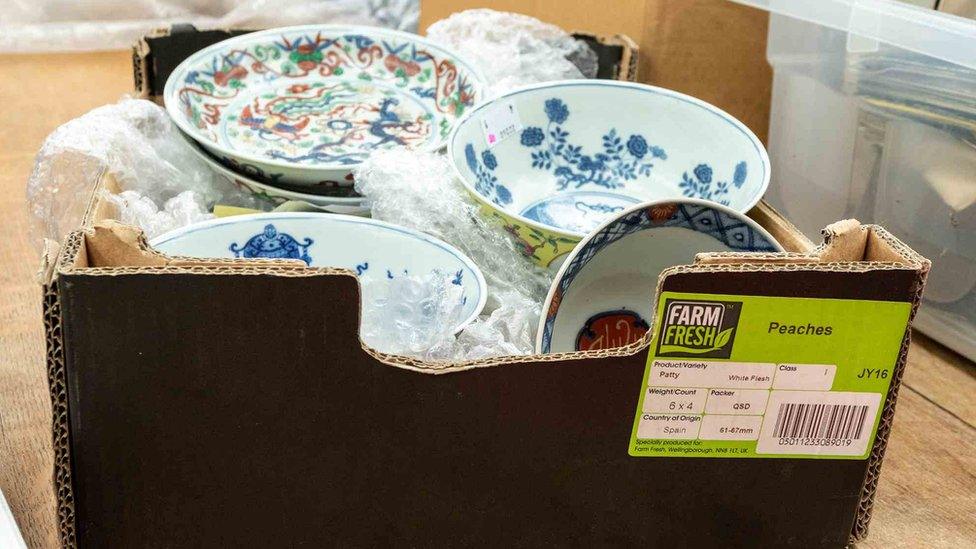
The bowls and plates had been packed into a cardboard box for storage
A set of bowls displayed in a house for decades has made more than £112,000 at auction.
The ceramics, stored in a cardboard box before being offered for sale, turned out to be rare Chinese porcelain.
Four 16th Century Chinese Ming Dynasty wucai dishes were given a £4,000-£6,000 guide price but sold for £63,000.
The seller said his late mother, from Derbyshire, collected bowls and expected them to be worth "around £30", adding the result was "unbelievable".
The retired computer engineer, who wished to remain anonymous, said plates, bowls and dishes had been displayed at his mother's home in Etwall for decades.
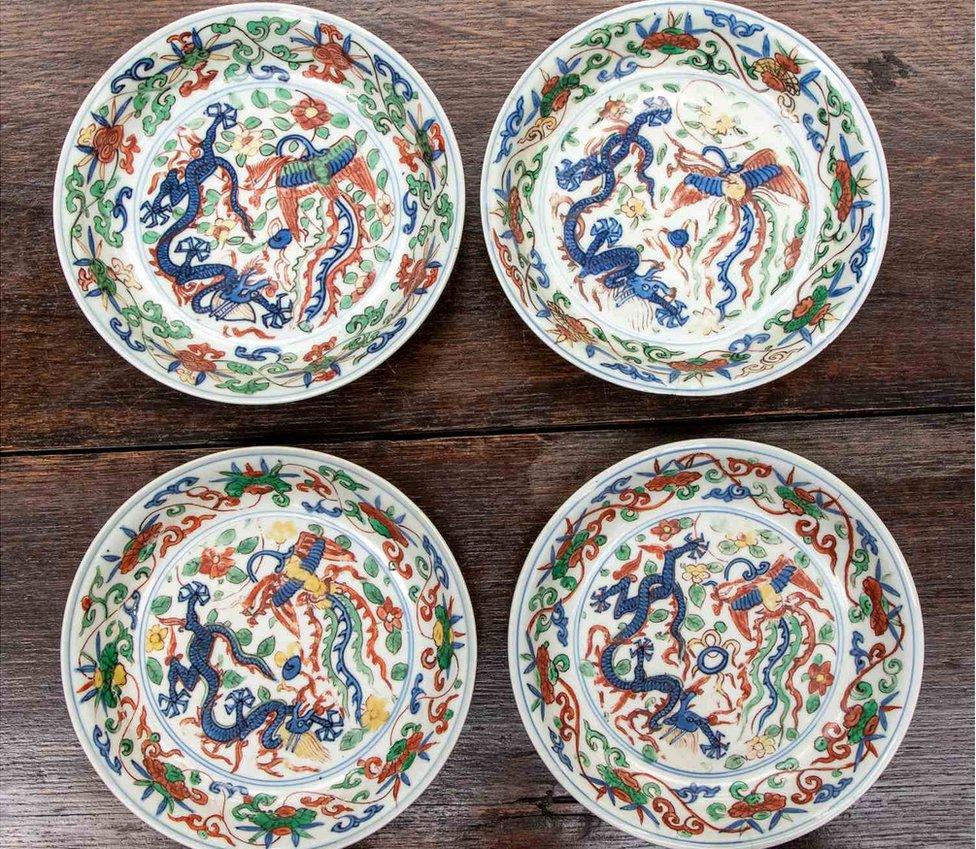
Despite some damage, the rare set of Ming Dynasty wucai dishes still attracted fierce bidding
He took them for auction and was soon told they were rare - and would have a guide price of thousands.
The 67-year-old said: "What happened next was unbelievable.
"I watched the auction live online and the prices kept rocketing. I was shouting at the computer.
"My sister was watching live online from Australia and we were texting each other. We just couldn't believe what was happening."
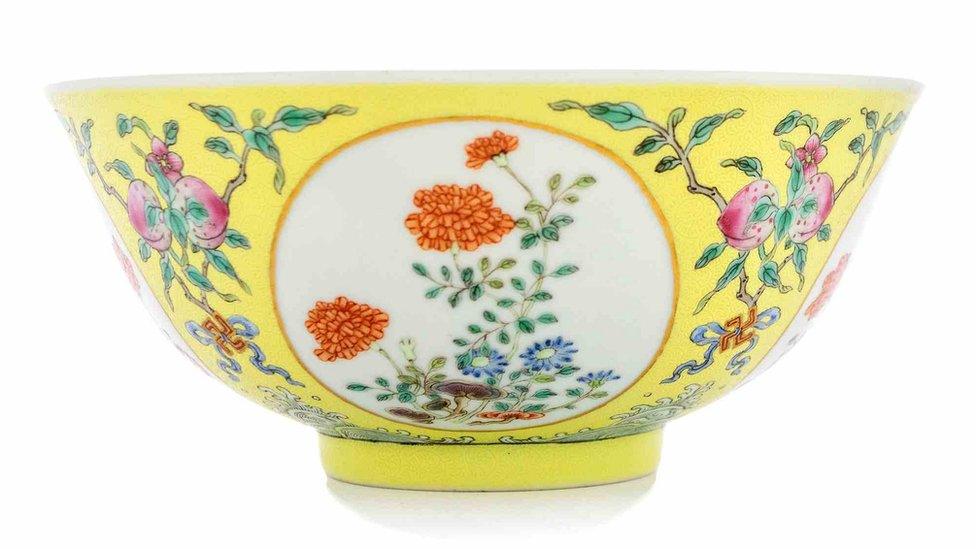
This 19th Century Daoguang bowl fetched £14,500
The auction house, Hansons, said the four Ming Dynasty dragon and phoenix dishes each had six character marks of the Wanli Emperor, who reigned from 1573 to 1620, and were decorated with a blue five-clawed dragon, mustard-green phoenix bird, flowers and Buddhist emblems.
Three phone bidders competed for the set, with the winner coming from China.
The hammer price of £63,000, plus a buyer's premium, saw a total of £81,900 paid for the set.
Other treasures from the box were an Imperial porcelain yellow ground medallion bowl, Daoguang (1821-1850), which sold for £14,500, and an Imperial porcelain famille rose pink ground medallion bowl of the same age, which went for £8,800.
Hansons said with the buyer's premium, the three lots made a total of £112,190.
Hansons owner Charles Hanson added: "What made the four dishes which achieved £63,000 particularly special was the fact they'd remained together as a set.
"They may have been used as altar pieces in a Chinese monastery or temple. They probably came to England after the First or Second World War."

Follow BBC East Midlands on Facebook, external, on Twitter, external, or on Instagram, external. Send your story ideas to eastmidsnews@bbc.co.uk, external.
- Published18 May 2022
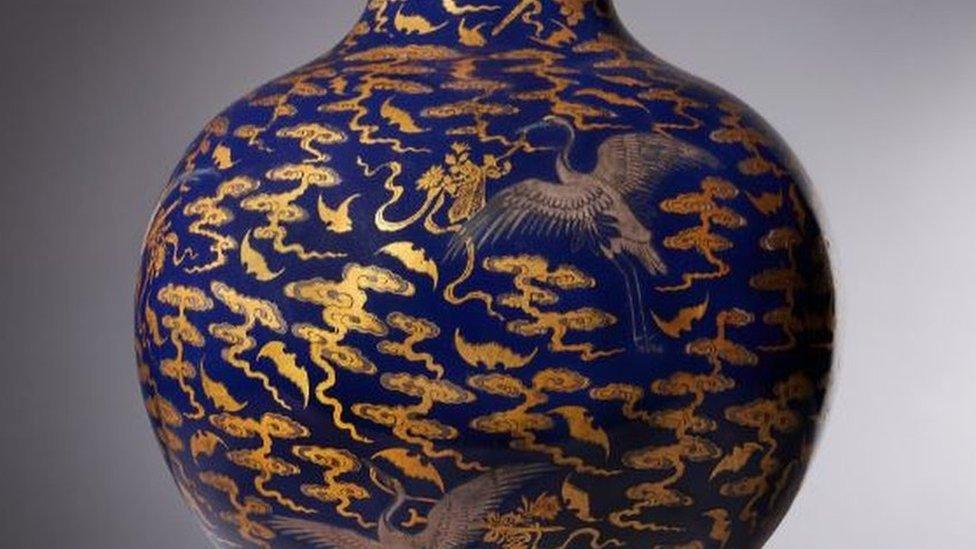
- Published3 March 2021
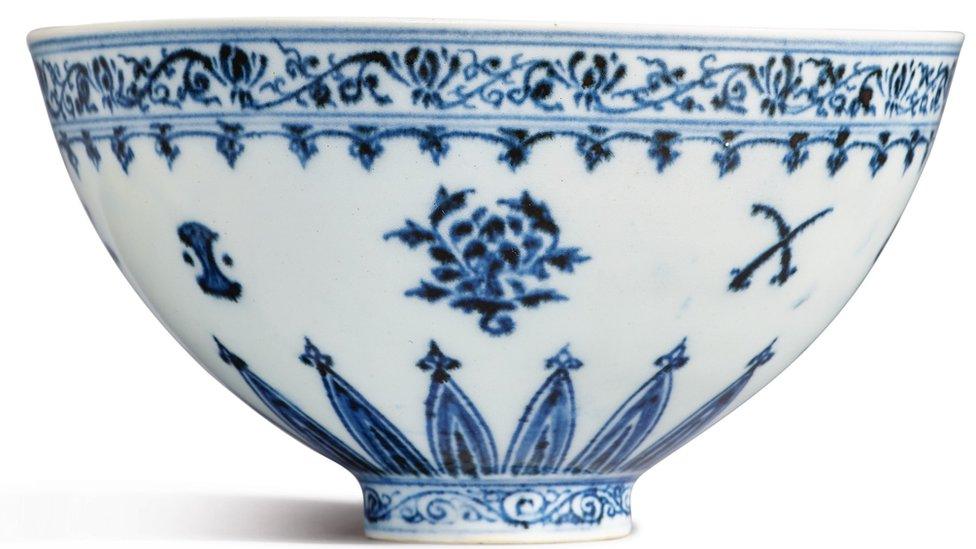
- Published23 October 2020
